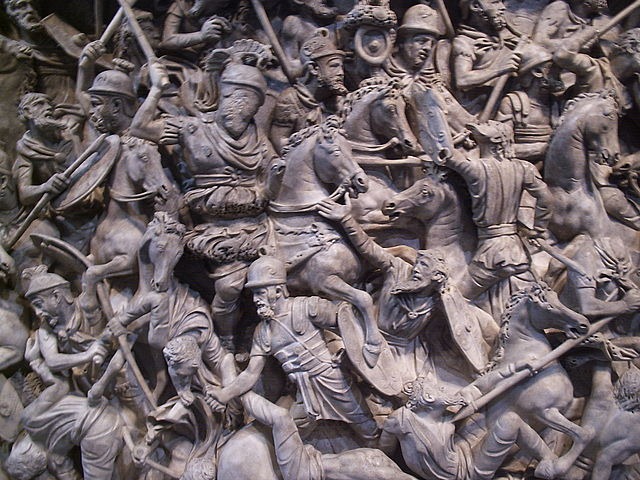-
Брой отговори
15747 -
Регистрация
-
Последен вход
-
Days Won
464
Content Type
Профили
Форуми
Библиотека
Articles
Блогове
ВСИЧКО ПУБЛИКУВАНО ОТ Last roman
-
ми да, че иначе е тегаво да чакаш половин година поръчкови дрехи.
-
източникът е изключително достоверен, така че няма как темата да не се озове в този раздел.))
-
освен това сам оспамвате темата си с многобройни 'лирични отклонения', когато Ви затапят по определени въпроси.
-
Табов, моля Ви да не развивате конспиративни теории, ако не искате темата Ви пак да се озове в най-подходящия за нея раздел.
-
ей това е 100% реенактор.
-
Става филмчето.
-
Ми тегли й една.
-
Ти па де си мяркал Рандката.
-
въпреки условните /демек придобити/ инстинкти, основните ни поведенчески програми /особено полово детерминираните/ са си вродени и трябва много силна настройка, за да бъдат неглижирани или променени.
-
и моите наблюдения са сходни))
-
австралийски учени успяха да извлекат ДНК от два изчезнали преди 40 000 вида - представители на мегафауната, вероятно изтребена от аборигените; Out of the pouch: Ancient DNA from extinct giant roos Scientists have finally managed to extract DNA from Australia’s extinct giant kangaroos – the mysterious marsupial megafauna that roamed Australia over 40,000 years ago. A team of scientists led by Dr Bastien Llamas and Professor Alan Cooper from the University of Adelaide’s Australian Centre for Ancient DNA (ACAD) have extracted DNA sequences from two species: a giant short-faced kangaroo (Simosthenurus occidentalis) and a giant wallaby (Protemnodon anak). These specimens died around 45,000 years ago and their remains were discovered in a cold and dry cave in Tasmania. Relatively good preservation conditions in the cave allowed enough short pieces of DNA to survive so researchers could reconstruct partial “mitochondrial genomes” – genetic material transmitted from mother to offspring and widely used to infer evolutionary relationships. “The ancient DNA reveals that extinct giant wallabies are very close relatives of large living kangaroos, such as the red and western grey kangaroos,” says lead author Dr Bastien Llamas, ACAD senior research associate. “Their skeletons had suggested they were quite primitive macropods a group that includes kangaroos, wallabies, pademelons and quokkas – but now we can place giant wallaby much higher up the kangaroo family tree.” The research has also confirmed that short-faced kangaroos are a highly distinct lineage of macropods, which had been predicted on their unusual anatomy. Generally poor preservation conditions and the age of Australian megafaunal remains has prevented retrieval of its DNA until now, although complete nuclear or mitochondrial genomes have been previously obtained from extinct megafauna from Eurasia, the Americas, and New Zealand. Scientists attempting to decipher the evolutionary relationships of the Australian megafauna were previously restricted to using information from bones. “In addition to poor DNA preservation, most of the extinct Australian megafauna do not have very close relatives roaming around today, which makes it more difficult to retrieve and interpret the genetic data,” says Dr Llamas. “Together with my colleagues Alan Cooper and Paul Brotherton, we had to think hard about experimental and bioinformatics approaches to overcome more than 10 million years of divergent evolution between the extinct and living species.” Although ancient DNA confirms that the short-faced kangaroos left no descendants, it also shows their closest living cousin could be the banded hare-wallaby (Lagostrophus fasciatus), which is now restricted to small isolated islands off the coast of Western Australia. “Our results suggest the banded hare-wallaby is the last living representative of a previously diverse lineage of kangaroos. It will hopefully further encourage and justify conservation efforts for this endangered species,” says co-author Professor Mike Lee of the South Australian Museum and the University’s School of Biological Sciences. http://www.heritagedaily.com/2015/01/pouch-ancient-dna-extinct-giant-roos/106419
- 6 мнения
-
- 1
-

-
Малоум - по-скоро ние действаме според животински поведенчески характеристики, в което няма нищо чудно. Въпреки технологично напредналото общество, в което живеем - ние постъпваме инстинктивно, дори и без да го осъзнаваме. Технически погледнато ние сме стадо със строга йерархия. И целият прогрес около нас се дължи на омегите, които искат да се изкачат по-нагоре в стълбицата, за да спечелят някоя женска и да имат шанса да оставят потомство.
-
е това е стар филм - някъде отпреди 10 години. Но става.
-
Добре, ако бъде преценено, ще върнем темата Ви в този раздел, което честно казано ще бъде безпрецедентен жест от наша страна към Вас, въпреки явно фантастичните Ви хипотези, изложени в нея.
-
Ихтиозавър на 170 милиона години хвърля светлина върху еволюцията на тези морски влечуги през ранния Юрски период: 170-Million-Year-Old Fossil Of Previously Unknown Marine Reptile Found In Scotland After trawling through a collection of fossil fragments gathered on the Isle of Skye, a team of paleontologists pieced together the remains of a previously unknown species of ancient marine reptile. The now extinct predatory animal, an ichthyosaur, swam the shallow waters around Scotland some 170 million years ago, during the Jurassic Period. Alongside identifying a new species, the team also found the remains of several known species of ichthyosaur, which are believed to be the first ichthyosaurs from Scotlanddescribed so far. Not only that, but the find is helping scientists slowly fill in a frustrating gapin the fossil record during the Middle Jurassic, a 15-million-year stretch that began around 176 million years ago. The discovery was made by researchers at the University of Edinburgh who had the laborious task of examining a collection of fragmented skulls, teeth and vertebrae unearthed by different teams of scientists and fossil hunters over the past 50 years. Several different species of ichthyosaur were discovered, which spanned the Early to Middle Jurassic, including the newly described Dearcmhara shawcrossi. The latter part of the name is in honor of the specimen’s discoverer, Brian Shawcross, who donated the fossils to a museum after recovering them in 1959. Dearcmhara is gaelic for “marine lizard”; ichthyosaur translates to fish lizard. D. shawcrossi represents both a new species and a new genus, making the discovery particularly exciting. The specimen, which has been described in the Scottish Journal of Geology, was around the size of an average great white shark, measuring 4.3 meters (14 ft) from snout to tail. This animal therefore sits at the smaller end of the ichthyosaur spectrum as some previously described specimens measured up to nine meters (30 ft) in length. Ichthyosaurs were predatory marine reptiles that swam our oceans while the dinosaurs ruled the land. They lived during the Mesozoic Era, the Age of the Reptiles, first appearing during the Triassic and finally dying out during the Cretaceous. Early ichthyosaurs had long, flexible bodies and probably swam like modern day eels. However, they rapidly diversified from animals that resembled lizards with fins into a more streamlined, fish-like form that was built for speed. Although a number of ichthyosaur fossils have been unearthed since their discovery along the Dorset coast back in 1809, skeletons from the Middle Jurassic period are rare. “It’s one of a select few specimens of that age in the world,” said paleontologist and study co-author Stephen Brusatte. Furthermore, Brusatte is excited to be able to boast that this is “the first time we’ve found a new species that was uniquely Scottish.” [Via University of Edinburgh, Scottish Journal of Geology, BBC News and Live Science]
-
още нищо не си видял: Писателят езотерик Милан Миланов: В подземия под Мадарския конник още живеят оцелели атланти! http://www.bgnow.eu/news.php?cat=2&cp=0&newsid=30304
-
обърнете се към администрацията, но молбата ви беше разгледана и беше преценено, че темата не е за триене.


